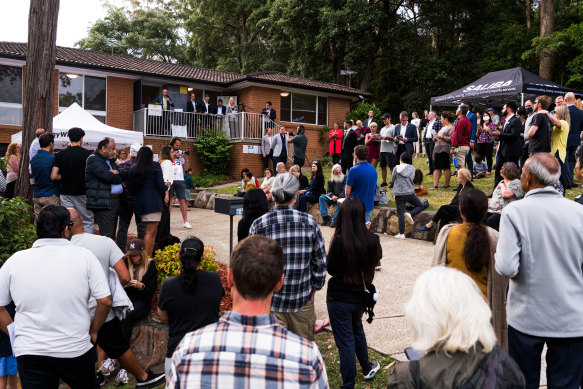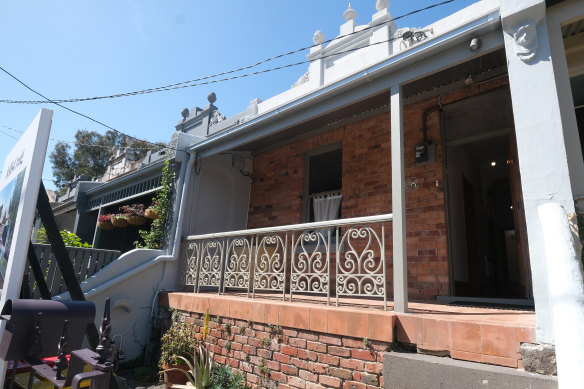This was published 2 years ago
Will it be any easier to buy a first home this year?
By Sue Williams
First home buyers who can summon the courage and means to make the leap into the property market in 2023 will likely face less competition and softer prices than during the boom.
Although the number of first home buyers in the market has plunged about 31 per cent over the year to November, according to Australian Bureau of Statistics figures, given the rise in interest rates, the end of some grants and tighter borrowing restrictions, there are still opportunities.

First home buyers may face less competition this year than during the boom.Credit: James Brickwood
“It’s a difficult time for first home buyers, but there’s still some good news,” said PRD Real Estate chief economist Diaswati Mardiasmo, adding the average loan size has been edging down.
“So there’s hope in that the amount they’re committing to isn’t going up.
“Some prices are also falling, and fewer buyers around means that you can negotiate a bit more with the vendors.”
In addition, it’s beginning to look as though interest rates won’t have quite so far to rise in 2023, after hikes for eight months in a row in 2022 that have reduced the amount of money potential buyers can borrow and spend at auction.
Home buyers are expected to face a cut in their borrowing power of 30 per cent to 35 per cent, compared to a fall so far in national home values of 8.4 per cent from their peak, on CoreLogic data. Several bank economists forecast peak-to-trough property price falls between 15 per cent and 20 per cent.
“We’re seeing interest rates starting to stabilise and there might be only one or two more rate rises which’ll be a good thing,” said Lloyd Edge, the managing director of Sydney buyers’ agency Aus Property Professionals. “It’s going to be a buyers’ market for the next six to 12 months.
“Vendors are being a bit more realistic in their expectations, prices will still be down a bit and there’ll be more choice and less competition. In addition, rents are really high so they’ll encourage first home buyers into action.”
Melbourne mortgage broker Finspo is also anticipating more interest from first home buyers in 2023, chief executive Angus Gilfillan says.
“We are in a bit of a transition in the market at the moment, and that can always create opportunities for first home buyers,” he said. “With more property on the market and less demand, it can be a good time for first home buyers to be ready.”
Gilfillan advises they need to be totally across the numbers, such as by using a digital mortgage calculator tool, and work out what strategies might most suit them.
“We’re still seeing a lot of first home buyers coming into the market as ‘rentvestors’ – buying a place to rent out and renting a home themselves,” Gilfillan said.
“They’ve got to look at ways to increase their buying power too. Are there any grants or schemes or guarantor arrangements they can make use of, or receive help from parents or family members, or maybe they’re in a profession, like in the medical industry, where they can borrow more without mortgage insurance?”
In NSW, first home buyers can now choose an annual land tax instead of stamp duty on properties up to $1.5 million. The state opposition plans to lift the threshold for stamp duty exemptions to $800,000 and concessions to $1 million if it wins the March election.
Victoria offers stamp duty exemptions up to $600,000 and concessions to $750,000, as well as a shared equity program allowing low-deposit purchases.
The federal First Home Guarantee program allows low-deposit purchases without mortgage insurance.
Gilfillan suggests all such buyers should speak to a mortgage broker and also do all the necessary research into where, and in what, they want to live. “Then they can act decisively when the opportunity comes,” he said.

First home buyers need to know whether they can borrow enough to live in their desired suburb.Credit: Luis Enrique Ascui
For that, they need to have their finance approved as soon as possible, says Edge.
“They should also see how many people turn up to each open house to see how much interest there is and go to a few auctions to get an understanding of what people are paying, so they’ll know how much to offer and won’t pay too much for a property,” he said.
It also helps if a first home buyer isn’t too fixed on what type of property, and what exact suburb, they want, advises Mardiasmo. A neighbouring suburb might be a lot more affordable, and houses in one area could be in short supply, while a townhouse or apartment might offer much better value.
“Also, you have to show yourself in the best possible light to the bank. If you eat out a lot and order UberEats all the time, and use Afterpay and Zip Pay, you might not look such a good prospect for a loan,” she said.
“You might have $100,000 in the bank for your deposit, but that could have been a gift from your parents or an inheritance; the bank wants to know that you have a saver profile rather than a debtor profile, so you’ll be able to service the rest of the mortgage.”
By the same token, you might have multiple credit cards and have only a few hundred dollars owing on them, but the bank will look at the credit limit on each one and factor those in, rather than the amount you’ve spent.